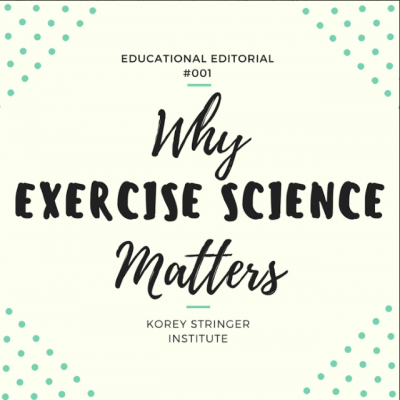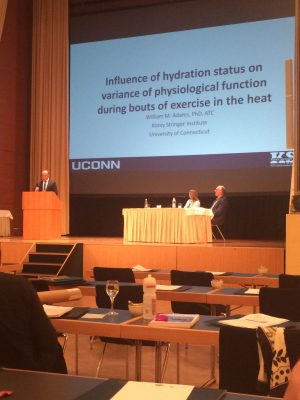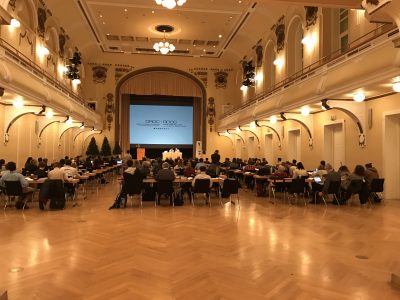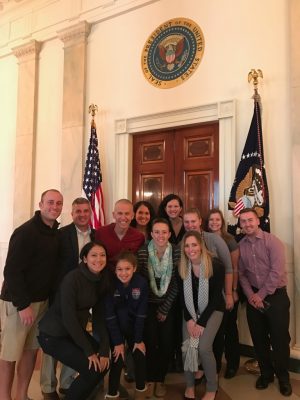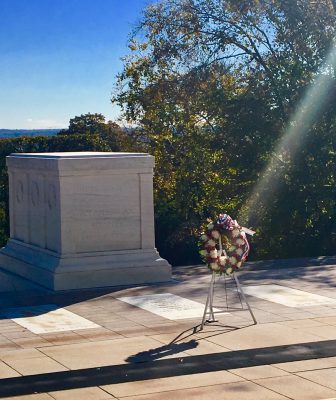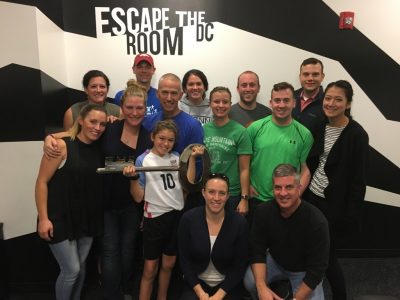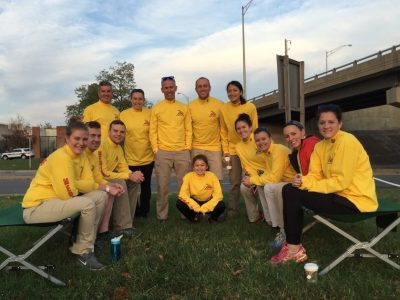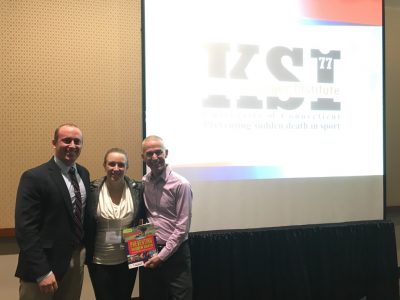Rachel Katch, ATC, MS
Associate Director of Military and Occupational Safety
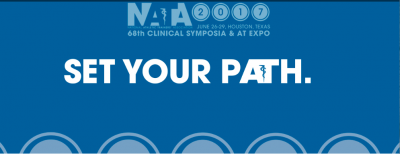
On June 26th – 29th, members of both the Korey Stringer Institute’s (KSI) staff and Medical & Science Advisory Board will be traveling to Houston, Texas to present at the National Athletic Trainers’ Association (NATA) 68th Clinical Symposia & AT Expo. Topics for dissemination range from the most up-to-date biomechanical research, to preventing sudden death in sport, all the way to new ground-breaking research regarding insurance costs for athletic trainers. No matter the topic, these presentations will provide those in attendance with evidence based research and information pertinent to enhancing the athletic training profession. Specific dates, times, and locations for each presentation being disseminated by the KSI staff and Medical & Science Advisory Board members are available below in Table 1. Hope to see you at the NATA Clinical Symposia, and always, please make sure to come and see us at our KSI booth at the AT Expo!
KSI Medical & Science Advisory Board Presentations
Lindsay DiStefano, PhD, ATC, from the University of Connecticut (UConn) will be disseminating multiple presentations during the course of the symposium. One presentation is titled, “Anterior Cruciate Ligament Injury Prevention Strategies: Translation of Research Findings into Clinical Practice,” and focuses on introducing the most current ACL injury prevention research and the evidence behind it. Additionally, Dr. DiStefano has a feature presentation during the session, “Lower Limb Preventative Training Programs Best Practice,” titled, “Effectiveness of Lower Limb Preventive Training Programs at Reducing Injuries.” This presentation will focus on educating attendees about the effectiveness, best practices, and implementation of preventative training programs.
Kevin Guskiewicz, PhD, ATC from the University of North Carolina – Chapel Hill will be presenting, “Catastrophic Traumatic Injuries in Sport,” during the session titled, “Catastrophic Sports Injury and Illnesses Among US College and High Schools.” This is a feature presentation alongside Douglas Casa, PhD, ATC, FNATA who will also be speaking during this session with a presentation titled, “Catastrophic Heat and Exertional-Related Conditions Among Athletes.” This session will focus on the incidence and characteristics of catastrophic events, and evidence-based policies and recommendations to minimize the risk of these events in the future.
From the University of South Florida, Rebecca Lopez, PhD, ATC will be presenting, “Exertional Heat Illness in Younger Athletes,” as well as a learning lab titled, “Recognition and Treatment of Exertional Heat Stroke.” The purpose of the first evidence-based forum is to provide clinicians with the best evidence-based clinical practice regarding the prevention, recognition, treatment, and return to play for the most common exertional heat illnesses. Second, the learning lab will focus on providing clinicians with the knowledge and opportunity to practice rectal thermometry and cold water immersion in a safe learning environment.
Also from the UConn, Stephanie Mazerolle, PhD, ATC, FNATA in the session, “A Multi-Level Examination of Career Intentions and Work-Life Balance,” will be presenting, “Individual Elements that Influence the Development of Career Planning and Work-Life Balance.” This is a feature presentation that will examine and discuss research available regarding alternative therapies utilized in the clinical setting to promote work-life balance. Additionally, Brendon McDermott, PhD, ATC from the University of Arkansas will be presenting, “Exertional Heat Illness in Younger Athletes.” This committee session will focus on providing clinicians with the best evidence-based clinical practice regarding the prevention, recognition, treatment, and return to play for the most common exertional heat illnesses.
Lastly, Kevin Miller, PhD, AT, ATC from Central Michigan University will be presenting, “New Advances in Exertional Heatstroke Diagnosis, Treatment and Prevention.” This special topic presentation will discuss recent experimental studies that address the necessity of equipment removal prior to initiating cold-water immersion; whether cooling garments can prevent the onset of hyperthermia or affect hydration status; whether temperate water can be used to effectively cool hyperthermic humans; and how far into the rectum Athletic Trainers should insert a thermometer to obtain the most valid data.
KSI Staff Presentations
Multiple KSI staff will be presenting in a session titled, “Enhancing Safety of Secondary School Athletics Through Policy Change,” including Alicia Pike, MS, ATC, Robert Huggins, PhD, ATC, and William Adams, PhD, ATC. Individually, their presentation titles are, “Examining Sport Safety Policies in Secondary Schools: An Analysis of States’ Progress Toward and Barriers to Policy Implementation,” “State High School Athletics Policy Change Successes and Barriers: Results from the Collaborative Solutions for Safety in Sport Meeting,” and, “Current Status of Evidence-Based Best Practice Recommendations in Secondary School Athletics,” respectively. This feature presentation will provide participants with evidence describing the barriers associated with implementing policy change from a state administrative level and the steps that have been made to initiate change to protect secondary school student athletes.
Additionally in a session titled, “The Secondary School AT Value Model, Minimizing Cost and Maximizing Safety from an Insurance Perspective,” Yuri Hosokawa, MAT, ATC, and Robert Huggins, PhD, ATC, will be disseminating their respective presentations titled, “Optimizing the Direction of Care: A Secondary Insurance Claims Analysis,” and, “We Can’t Afford to Hire an AT…You Can’t Afford Not To! Reducing Risk, Saving Money, and Saving Lives.” In this committee session presented by the NATA Initiative, the speakers will: (1) discuss ways athletic training services may directly benefit multiple entities (insurance providers, policy holders, and school districts), (2) critically assess the secondary insurance cost to identify unnecessary medical costs, and (3) minimize the financial burden of secondary schools through injury prevention and appropriate risk management.
Lastly, Robert Huggins, PhD, ATC will present, “An Overview of the Secondary Schools ATLAS Project: Where Are We Now?” in the session, “Out of the Fire and Into the Frying Pan.” This committee session presented by the Secondary School Athletic Trainers’ Committee will outline the use of the ATLAS project to show the concentration of secondary school athletic trainers and its value for potential networking within and between states and organizations.
Table 1. List of Presenters
| Presenter |
Presentation Title |
Time / Location |
| |
TUESDAY, JUNE 27th, 2017 |
|
| Rebecca Lopez, PhD, ATC |
Exertional Heat Illness in Younger Athletes |
8:15 AM
BCC, Room 370 |
| Stephanie Mazerolle, PhD, ATC, FNATA |
Individual Elements that Influence the Development of Career Planning and Work-Life Balance |
8:15 AM
BCC, General Assembly A |
| Brendon McDermott, PhD, ATC |
Exertional Heat Illness in Younger Athletes |
8:15 AM
BCC, Room 370 |
| Kevin Miller, PhD, AT, ATC |
New Advances in Exertional Heatstroke Diagnosis, Treatment and Prevention |
10:45 AM
BCC, Grand Ballroom C |
| Rebecca Lopez, PhD, ATC |
Recognition and Treatment of Exertional Heat Stroke |
1:30 PM
BCC, Room 342 |
| Robert Huggins, PhD, ATC |
An Overview of the Secondary Schools ATLAS Project: Where Are We Now? |
2:10 PM
BCC, Grand Ballroom A |
|
WEDNESDAY, JUNE 28th, 2017 |
|
| Kevin Guskiewicz, PhD, ATC |
Catastrophic Traumatic Injuries in Sport |
7:00 AM
BCC, General Assembly A |
| Douglas Casa, PhD, ATC, FNATA |
Catastrophic Heat and Exertional-Related Conditions Among Athletes |
7:30 AM
BCC, General Assembly A |
| Lindsay DiStefano, PhD, ATC |
Anterior Cruciate Ligament Injury Prevention Strategies: Translation of Research Findings into Clinical Practice |
7:30 AM
BCC, Room 370 |
|
THURSDAY, JUNE 29th, 2017 |
|
| Lindsay DiStefano, PhD, ATC |
Effectiveness of Lower Limb Preventive Training Programs at Reducing Injuries |
10:45 AM
BCC, General Assembly B |
| Robert Huggins, PhD, ATC |
“We Can’t Afford to Hire an AT”… “You Can’t Afford Not To!” Reducing Risk, Saving Money, and Saving Lives |
10:45 AM
BCC, Grand Ballroom B
|
| Yuri Hosokawa, MAT, ATC |
Optimizing the Direction of Care: A Secondary Insurance Claims Analysis |
11:15 AM
BCC, Grand Ballroom B |
| William Adams, PhD, ATC |
Current Status of Evidence-Based Best Practice Recommendations in Secondary School Athletics |
3:30 PM
BCC, General Assembly A |
| Robert Huggins, PhD, ATC |
State High School Athletics Policy Change Successes and Barriers: Results from the Collaborative Solutions for Safety in Sport Meeting |
4:00 PM
BCC, General Assembly A
|
| Alicia Pike, MS, ATC |
Examining Sport Safety Policies in Secondary Schools: An Analysis of States’ Progress Toward and Barriers to Policy Implementation |
4:30 PM
BCC, General Assembly A |
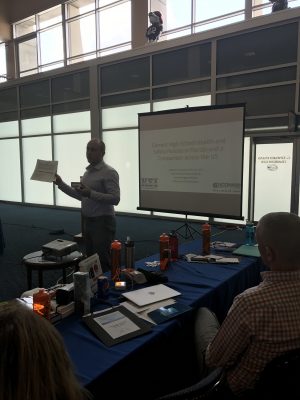
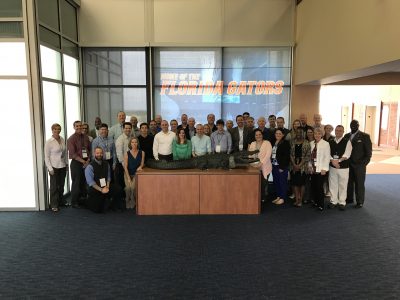

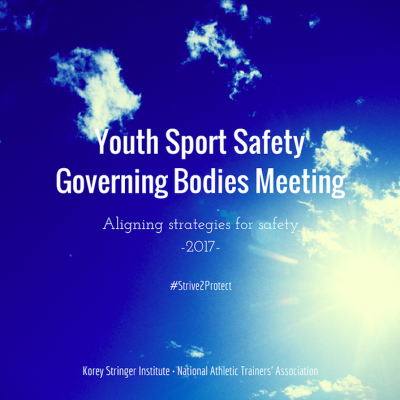 Four years ago, Dr. Casa had a vision to bring together the representatives responsible for safety initiatives for the leading national governing bodies (NGBs) of youth sports and educate them on how to make their sport safer. This past week, the four-year effort concluded with a meeting at the National Athletic Trainers Association (NATA) headquarters in Carrollton, TX. We have accomplished an astonishing amount over the past three years. In 2015, the 1st Youth Sport Safety Governing Bodies (YSSGB) Meeting was convened by the Korey Stringer Institute and hosted by the National Football League in New York, NY. The goal of this inaugural meeting was to educate the NGB attendees on the top causes of sudden death in sport and to learn what various NGBs have done up to this point to improve youth athlete safety. From this meeting, we were able to leave with a better understanding of the inner-workings of the NGBs; we also learned that it was extremely difficult for NGBs to provide any type of mandate or requirement because they do not have a structure to govern and oversee mandates outside of sport rules. From there, we knew we needed to create a document that outlines what the best practice recommendations should be for youth organizations.
Four years ago, Dr. Casa had a vision to bring together the representatives responsible for safety initiatives for the leading national governing bodies (NGBs) of youth sports and educate them on how to make their sport safer. This past week, the four-year effort concluded with a meeting at the National Athletic Trainers Association (NATA) headquarters in Carrollton, TX. We have accomplished an astonishing amount over the past three years. In 2015, the 1st Youth Sport Safety Governing Bodies (YSSGB) Meeting was convened by the Korey Stringer Institute and hosted by the National Football League in New York, NY. The goal of this inaugural meeting was to educate the NGB attendees on the top causes of sudden death in sport and to learn what various NGBs have done up to this point to improve youth athlete safety. From this meeting, we were able to leave with a better understanding of the inner-workings of the NGBs; we also learned that it was extremely difficult for NGBs to provide any type of mandate or requirement because they do not have a structure to govern and oversee mandates outside of sport rules. From there, we knew we needed to create a document that outlines what the best practice recommendations should be for youth organizations.
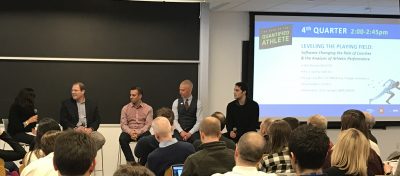
 (NFL, ESPN), Ryan Fitzpatrick (NY Jets), Sean Sansiveri (NFLPA), Dr. Leslie Saxon (USC Center for Body Computing), Meghan Duggan (United States Olympic Committee), Paul Rabil (MLL and US Lacrosse), Zak DeOssie (NY Giants), Shawn Springs (NFL), andCraig Adams (NHL).
(NFL, ESPN), Ryan Fitzpatrick (NY Jets), Sean Sansiveri (NFLPA), Dr. Leslie Saxon (USC Center for Body Computing), Meghan Duggan (United States Olympic Committee), Paul Rabil (MLL and US Lacrosse), Zak DeOssie (NY Giants), Shawn Springs (NFL), andCraig Adams (NHL).